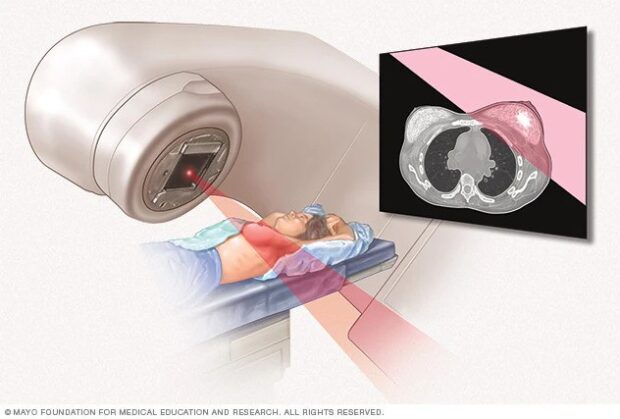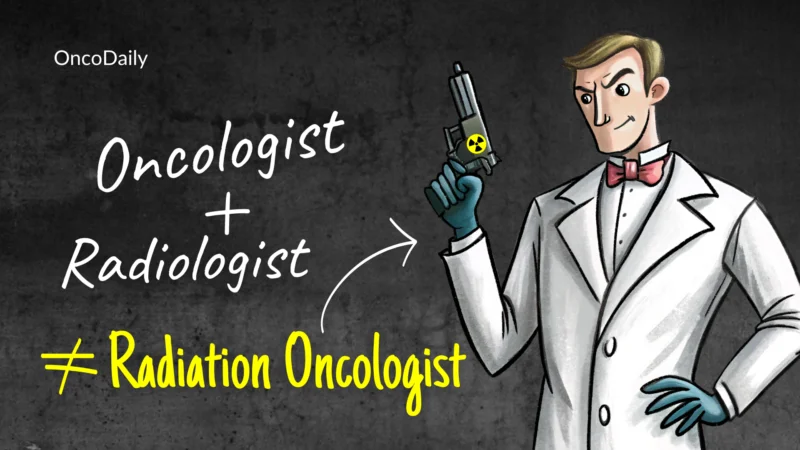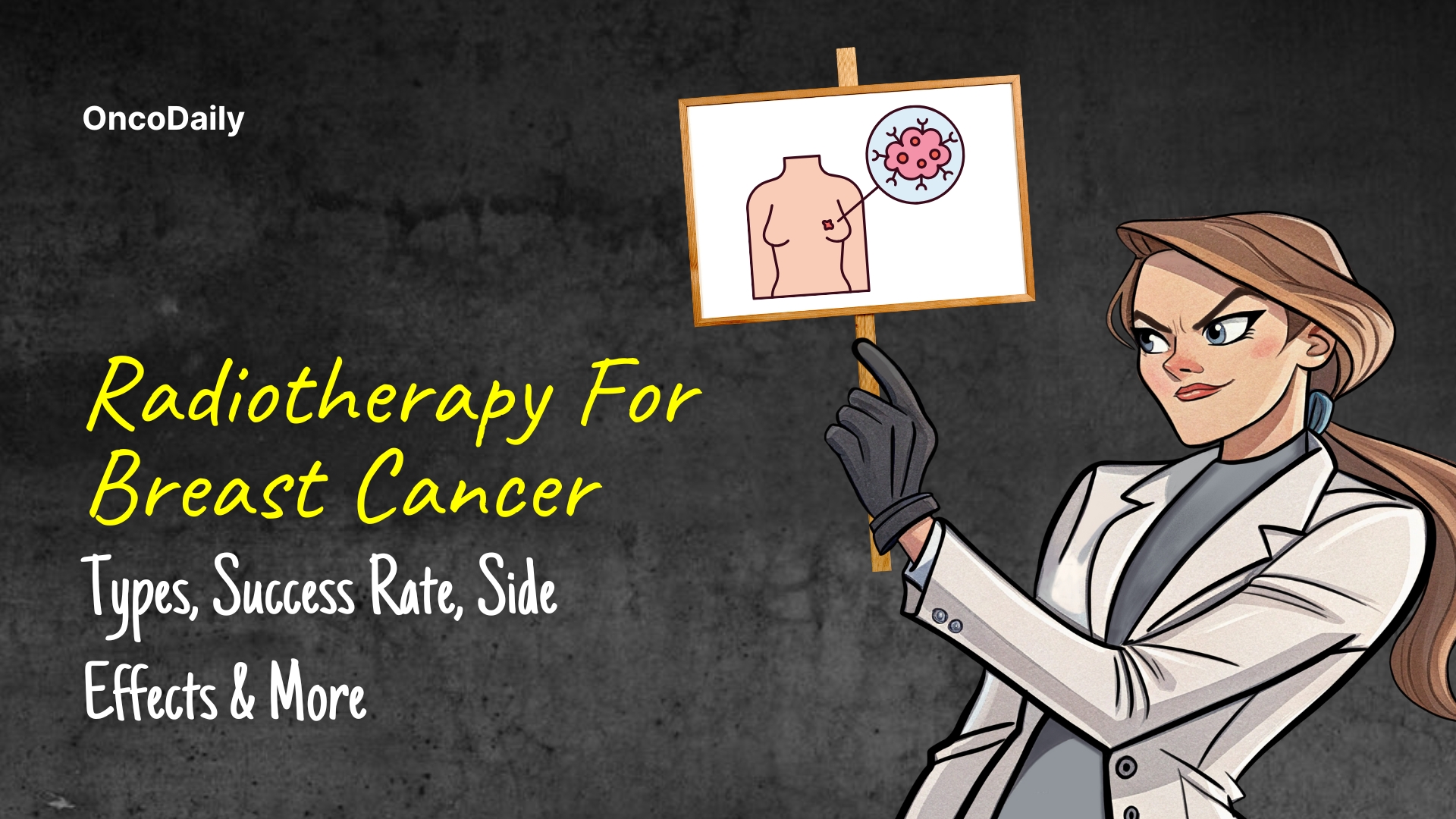Radiotherapy for breast cancer uses high-energy radiation to target and kill cancer cells, preventing recurrence after surgery. It works by damaging cancer cells’ ability to grow, while healthy cells recover more effectively. External beam radiation, the most common type, focuses radiation on the affected area from outside the body. It’s crucial to precisely target the cancerous tissues to minimize damage to surrounding healthy tissues. This is achieved through careful planning, ensuring the radiation is delivered effectively while reducing side effects.
Types of Radiotherapy for Breast Cancer
Radiotherapy is crucial in treating breast cancer by targeting remaining cancer cells after surgery. The two main types are External Beam Radiation Therapy (EBRT) and Brachytherapy. EBRT directs radiation from outside the body to the affected area, commonly after mastectomy or breast-conserving surgery (BCS) to target the whole breast or chest wall, and sometimes lymph nodes. Treatment typically lasts 6 to 7 weeks, though a shorter, higher-dose course may be used. Brachytherapy involves placing radioactive material inside or near the tumor bed, delivering concentrated radiation while sparing surrounding tissues. Both methods are tailored to the patient’s needs to effectively treat cancer and minimize side effects.
External Beam Radiation Therapy (EBRT)
External Beam Radiation Therapy (EBRT) delivers high doses of radiation from outside the body to the tumor site. A machine directs the radiation to areas affected by cancer, such as the breast tissue, chest wall, or lymph nodes. It’s commonly used after breast-conserving surgery (BCS) or mastectomy to eliminate remaining cancer cells. EBRT is typically given daily, five days a week, for 6 to 7 weeks. A shorter, more intense course called accelerated radiation may last 3 to 4 weeks. The precise targeting minimizes damage to healthy tissues while effectively treating cancer.

source: www.mayoclinic.org
Brachytherapy for Breast Cancer
Kauer-Dorner D, Berger D. Advances in Breast Brachytherapy. Breast Care. 2018. Breast brachytherapy (BT) offers precise radiation delivery, reducing exposure to normal tissues. While modern imaging and planning tools enhance accuracy, questions remain on the best techniques for boost therapy and APBI. MIB is effective but technically challenging. Long-term data and harmonized guidelines are needed to optimize outcomes and improve patient selection.
How Effective is Radiotherapy for Breast Cancer?
Joshi et al. (2007) highlighted in Int J Health Sci. that radiotherapy after breast-conserving surgery reduces local recurrence, improves survival and cosmestics, decreases the need for mastectomy, and has limited side effects, underscoring its vital role in breast cancer management.
What are the Side Effects of Radiotherapy for Breast Cancer?
Radiotherapy for breast cancer can cause short-term side effects like skin irritation (redness, dryness, tenderness), fatigue, and breast tenderness, which usually improve within months. Managing skin irritation involves wearing loose, cotton clothing and avoiding sun exposure, while light exercise, such as walking, helps reduce fatigue. Long-term side effects may include changes in breast size, firmness, and potential lung or heart damage. Lymphedema, or swelling in the arm or chest, may occur, especially if lymph nodes were treated. Compared to chemotherapy and surgery, radiotherapy’s side effects are generally less intense and more manageable. Despite the discomfort, many patients find the benefits in preventing recurrence outweigh the drawbacks.
Short-Term Side Effects of Radiotherapy
Short-term side effects of radiotherapy for breast cancer include skin burns, fatigue, and swelling. Skin burns, ranging from redness to peeling, can be managed with gentle skin care, avoiding harsh lotions, and wearing loose, cotton clothing. Fatigue is common; resting, light exercise like walking, staying hydrated, and a balanced diet can help. Swelling in the treated breast or underarm area may occur, particularly after lymph node radiation, and can be alleviated by elevating the arm, using compression garments, or practicing gentle movements. Always consult your healthcare provider for advice.
Long-Term Side Effects of Radiotherapy
Long-term side effects of radiotherapy for breast cancer include lymphedema, changes in breast shape or size, and, rarely, lung or heart damage. Lymphedema, or swelling in the arm or chest due to lymph node radiation, may develop months or years after radiotherapy for breast cancer. It can be managed with compression garments, specific exercises, and guidance from a lymphedema therapist. Changes to breast shape or size, such as firmness or shrinkage, can affect appearance, especially after reconstruction. Regular follow-ups with your oncologist are essential to monitor and address these changes. Persistent skin changes, including color variations, and potential fertility impacts should also be discussed during check-ups.

Know Your Doctor, Read Special Article by OncoDaily on Who is a Radiation Oncologist?
How Is Radiotherapy Administered for Breast Cancer?
During a radiotherapy session for breast cancer, patients undergo preparation steps for accurate treatment. Imaging scans, such as CT, MRI, or PET, are used to locate the tumor and plan radiation delivery. Patients are positioned on the treatment table, often with small tattoos or marks for future alignment. The radiation machine delivers focused beams to the tumor site, which is painless and lasts only a few minutes. Patients must remain still for accuracy but do not need to hold their breath.
After treatment, patients are monitored briefly before going home. Immediate aftercare is usually unnecessary, but following skincare instructions, like avoiding sun exposure and moisturizing, is important. Staying calm can be aided by deep breathing, meditation, or music. Communication with the radiation therapist helps manage anxiety or discomfort.
What Are the Costs of Radiotherapy for Breast Cancer?
Not all breast cancer patients are ideal candidates for radiotherapy for breast cancer. It is commonly used after breast-conserving surgery (BCS) or mastectomy, especially if cancer has spread to lymph nodes or recurrence risk is high. Suitability depends on cancer type, stage, and progression. Hormone receptor-positive cancers may not need radiotherapy if managed with surgery and hormone therapy. Triple-negative or HER2-positive cancers may benefit from combining radiotherapy with chemotherapy or targeted therapy. Patients with advanced cancer, poor health, or prior radiation to the same area may not be eligible. Treatment decisions are personalized.
What Research is Being Done on Radiotherapy for Breast Cancer?
Lavigne et al. (2024) in Radiotherapy and Oncology found that single-fraction preoperative partial breast irradiation (20 Gy) followed by breast-conserving surgery in 13 women with low-risk breast cancer resulted in an 84.6% pathologic response. After a median 48.5-month follow-up, no recurrences or cancer-related deaths occurred. Toxicities were minimal, with 60% reporting good or excellent cosmetic outcomes at 3 years, indicating that this radiotherapy for breast cancer approach is feasible and well tolerated. Few studies have explored this approach, but the results suggest it could be a promising option for certain patients.
How Can Patients Support Their Health During Radiotherapy?
During radiotherapy for breast cancer, maintaining physical and emotional well-being is crucial. A balanced diet with fruits, vegetables, lean proteins, and whole grains, along with staying hydrated, supports healing and energy. Light exercise, like a 30-minute walk or gentle stretching, helps reduce fatigue and improve mood, though activities should be tailored to individual capacity. Stress-reduction techniques such as deep breathing, meditation, or yoga, along with support from counseling or groups, can help manage anxiety. By following personalized advice from the care team, patients can optimize recovery and improve quality of life during radiotherapy for breast cancer.
What Support is Available for Breast Cancer Patients Undergoing Radiotherapy?
Breast cancer patients undergoing radiotherapy for breast cancer can access a variety of emotional and psychological support services. Many centers offer support groups, counseling, and integrative therapies like yoga, acupuncture, and nutrition counseling. Social workers and therapists provide personalized support for side effects, diet, and emotional challenges. Online resources and community programs also offer valuable assistance. Collaborating with the care team ensures comprehensive support for improved recovery and quality of life during radiotherapy for breast cancer.
Written by Aren Karapetyan, MD
FAQ
How long should I wait before exercising after radiotherapy?
You should consult your healthcare team, but light exercise can typically be resumed within a few days to a couple of weeks after radiotherapy, depending on individual recovery.
Does radiotherapy hurt?
Radiotherapy itself is painless, though some patients may experience side effects like skin irritation or fatigue during or after treatment.
Can I work during breast cancer radiotherapy?
Many patients can continue working during breast cancer radiotherapy, but it depends on individual health, treatment side effects, and job requirements.
How often are radiotherapy sessions for breast cancer?
Radiotherapy sessions are typically administered five days a week for 3 to 6 weeks, depending on the treatment plan.
What are the common short-term side effects of radiotherapy for breast cancer?
Short-term side effects include skin irritation, fatigue, swelling, and breast tenderness.
Does radiotherapy affect breast reconstruction?
Radiotherapy can impact breast reconstruction, and its timing and technique may be adjusted to minimize any negative effects.
Can I be around others after a radiotherapy session?
After radiotherapy, patients do not become radioactive and can safely be around others.
Is radiotherapy safe for pregnant women with breast cancer?
Radiotherapy is not recommended for pregnant women due to potential risks to the fetus.
How effective is radiotherapy in preventing breast cancer recurrence?
Radiotherapy is highly effective at reducing the risk of breast cancer recurrence, especially when combined with surgery and other treatments.
How long does it take for radiotherapy to work for breast cancer?
Radiotherapy can take several weeks to show results, with its full benefits becoming evident after the treatment course is completed.
